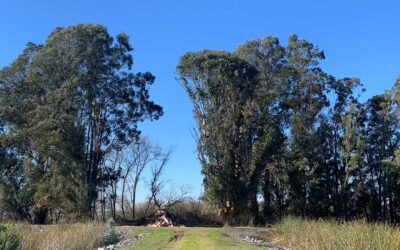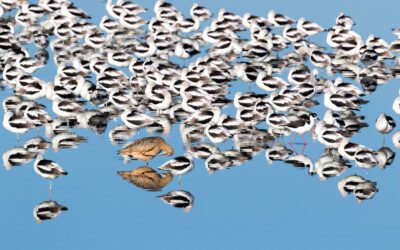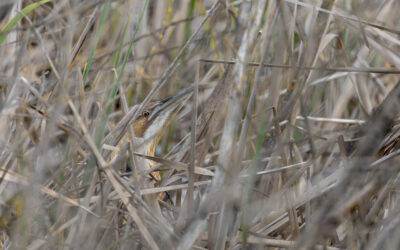From Peter Colasanti, 09-17:
September is the richest month for birding generally in Northern California, and that very wealth creates challenges. Populations of most species are roughly double those of the lean spring, but many are juvenile birds in fresh, though often dull plumage, and many of the adults are looking ragged, ready for their annual molt. Fall migration peaks in September and now we get our best chances of finding rarities, as young birds are likelier to be misdirected than the adults.
Returning waterfowl begin to show up in small numbers, but most are in eclipse plumage and must be identified by shape. Watch for the slender elegance of Northern Pintails. Tiny teal on Gray’s Mud are likely small-billed Green-wings, while spatulate billed Cinnamons are more frequent at Ellis Creek. We’ve been seeing fewer White Pelicans around this season, an indication of better breeding conditions inland after our recent wet winter. We usually enjoy good viewing of Sora and Virginia Rails at Ellis during the annual draw down, but that’s off the agenda for this year.
Expect to see lots of raptors passing through, mostly Red-tails for now. There’s a bumper crop of voles around this year, even bird eating accipiters are joining the feast. Vaux Swifts will sometimes ride a tailwind southward now, and are easier to pick out with most of the swallows gone. Rare shorebirds could show up, with Semipalmated Sandpipers and Short-billed Dowitchers still possible, Baird’s and Lesser Yellowlegs are findable, with possible Pectorals and Ruff. Mostly though expect Least and Westerns, and some Marbled Godwits, Willets, Curlews and the dominant Long-billed Dowitchers and Dunlin just starting to show up. For good views, bring a scope and bird at high tide when you’re likeliest to find birds roosting close in the central pond.
For migrant neotropical perching birds, put in a little time at the “kink” in the trail between the entry kiosk and Point Blue; the willows there often harbor some goodies. August 28th of this year we had a MacGillvray’s Warbler on a survey there. The willows from the entry to Adobe Creek often produce Willow Flycatcher in late September.





Thank you Peter for the timely update featuring our feathered friends passing through the Petaluma Wetlands. I’ll take my binoculars out for a look. Sharon